In the rapidly evolving landscape of mobile technology, the concept of eSIM (embedded SIM) has become a familiar term – it’s a digital SIM card that’s activated remotely. While the basics of eSIM are widely understood, delving into the intricacies reveals a landscape often muddled with confusion. In this blog, we’ll define what an eSIM profile is and explain how it works within the broader eSIM ecosystem.
What is eSIM?
At its core, an eSIM is a digital, non-removable SIM. It has the same function as the plastic SIM card, but it’s physically integrated into the device’s motherboard. In other words, it can’t be removed from the device and replaced with another SIM.
There are 2 primary elements that make an eSIM – the eUICC, often referred to as an eSIM chip and an eSIM profile.
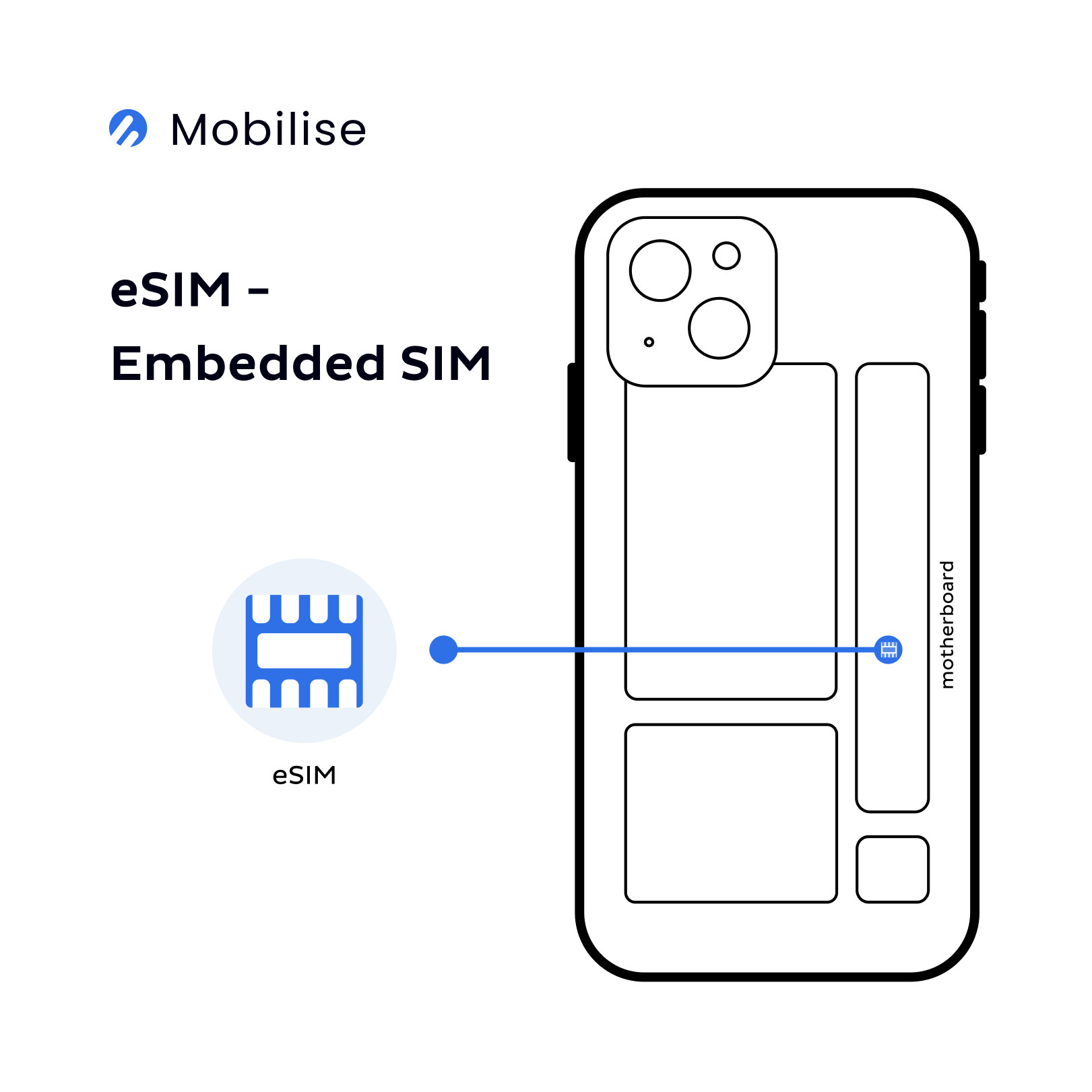
However, it doesn’t work on its own. It requires the user to download an operator’s eSIM profile to make it work. The process takes place online and it’s fully digital, streamlining the process and making the experience a lot better for the user.
RECOMMENDED READING
Find out more about eSIM from our Consumer eSIM white paper!
What is an eSIM profile?
An eSIM profile refers to the data associated with an operator’s subscription, including their credentials, configurations, and any SIM-based applications.
In the case of plastic SIM cards, the operator profile is pre-programmed directly onto the SIM card and can’t be changed or moved.
When it comes to eSIMs, it comes in a digital version and must be downloaded by the user onto the eSIM on their device.
The eUICC (embedded Universal Integrated Circuit Card) is the secure element within an eSIM solution, which can hold multiple profiles. They can then be downloaded remotely over the air into the eUICC. It’s important to note that while the eUICC is part of the device, the Profile is the property of the operator. It contains information that belongs to them (such as IMSI, ICCID, security algorithms, etc.) and is provided under license.
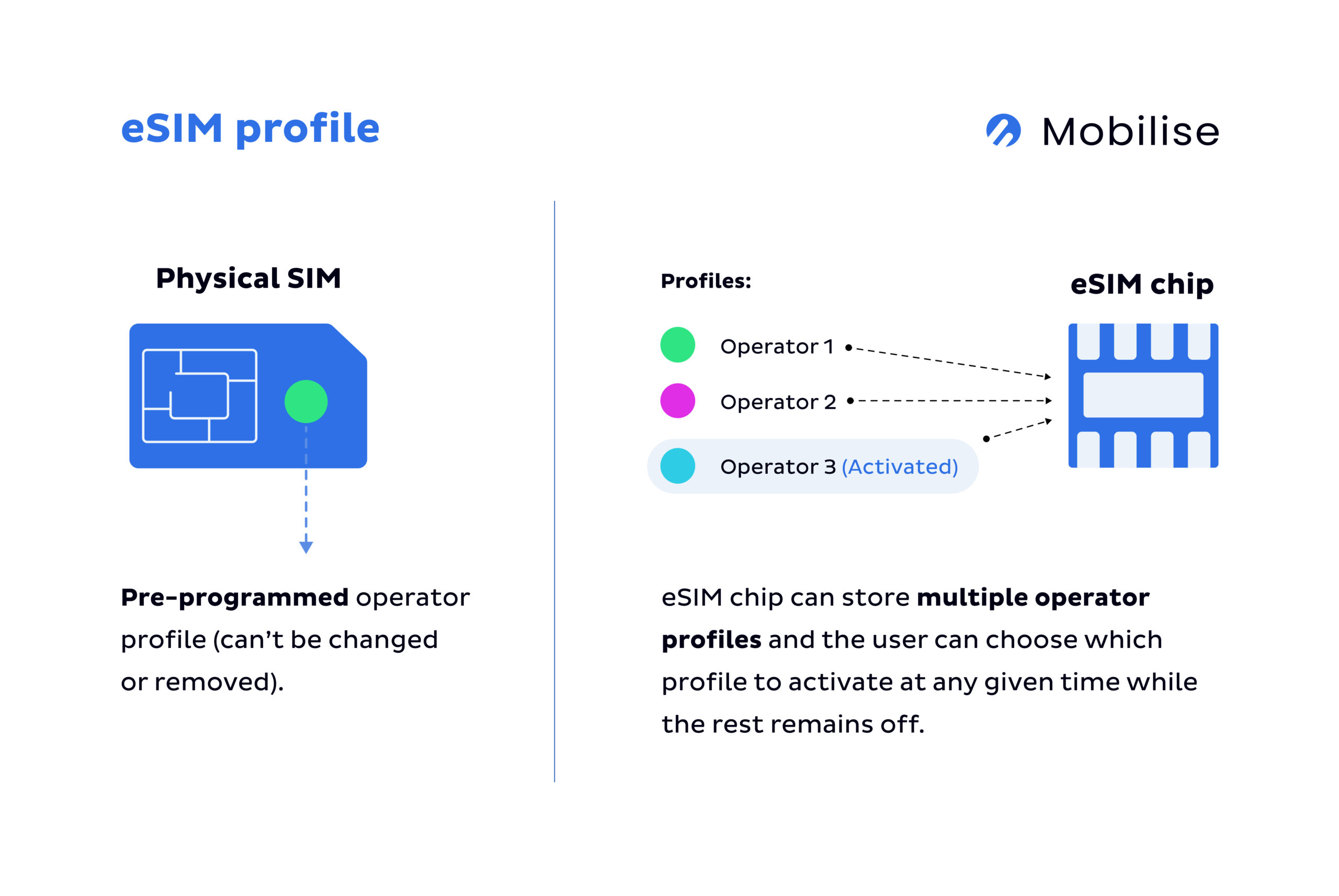
How many eSIM profiles can one have?
Thanks to eSIMs and their digital nature, contrary to physical SIM cards, eSIMs can accommodate multiple eSIM profiles on a user’s device. According to the GSMA, there’s no specific limit on the number of eSIM profiles that can be stored on an eUICC. This depends on the size of the profiles and the memory available.
In fact, the exact number of eSIM profiles that can be held simultaneously on a single device is dependent on the device manufacturer. The number currently ranges between 1 to 8 profiles. But we’ve heard rumours of devices that hold up to 20 eSIM profiles.
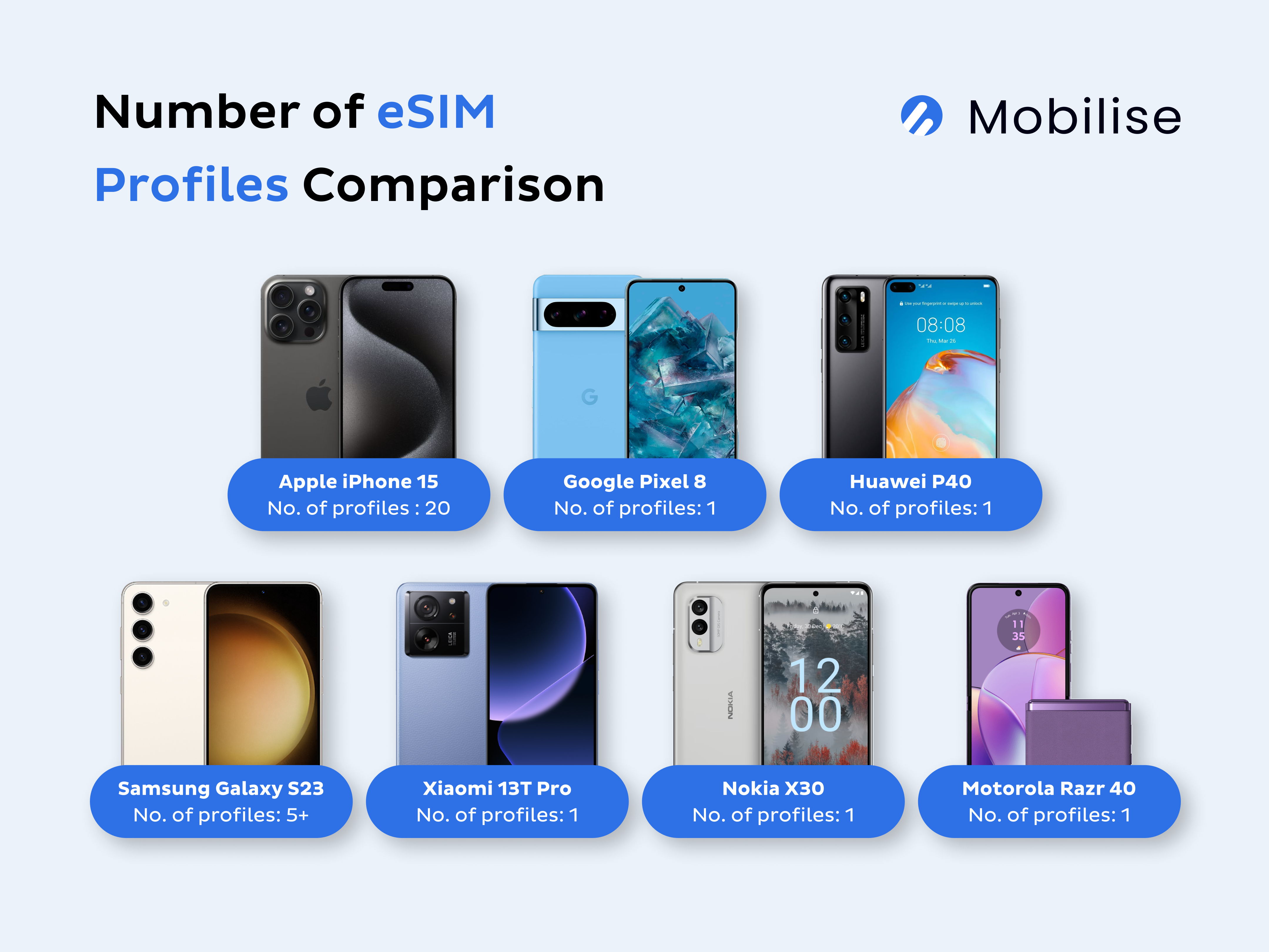
Additionally, no matter how many profiles can be held on one eSIM, the vast majority of eSIM-capable smartphones Thankfully, you can easily switch between profiles.
The only exception to this is devices which have a Dual SIM feature, such as unlocked It’s possible for users to choose one for data and one for calls and texts. On top of this, it’s also possible to allow data usage switching between eSIM profiles based on network strength.
How to set up an eSIM profile?
To understand how to download an eSIM profile, we need to understand the remote SIM provisioning process.
Remote SIM provisioning or RSP, allows for secure and remote operator profile management. This includes the authentication and activation of eSIMs and their enabling, disabling and deleting. This over-the-air process removes the need for physical access or SIM card swapping while changing carriers.
As defined earlier in the blog, there are 2 primary elements that make an eSIM – the eUICC, often referred to as an eSIM chip and an eSIM profile.
When a user wants to connect to a network, they will first receive instructions on how to connect to their chosen service provider, either from a QR code, manual activation instructions or through in-app activation.
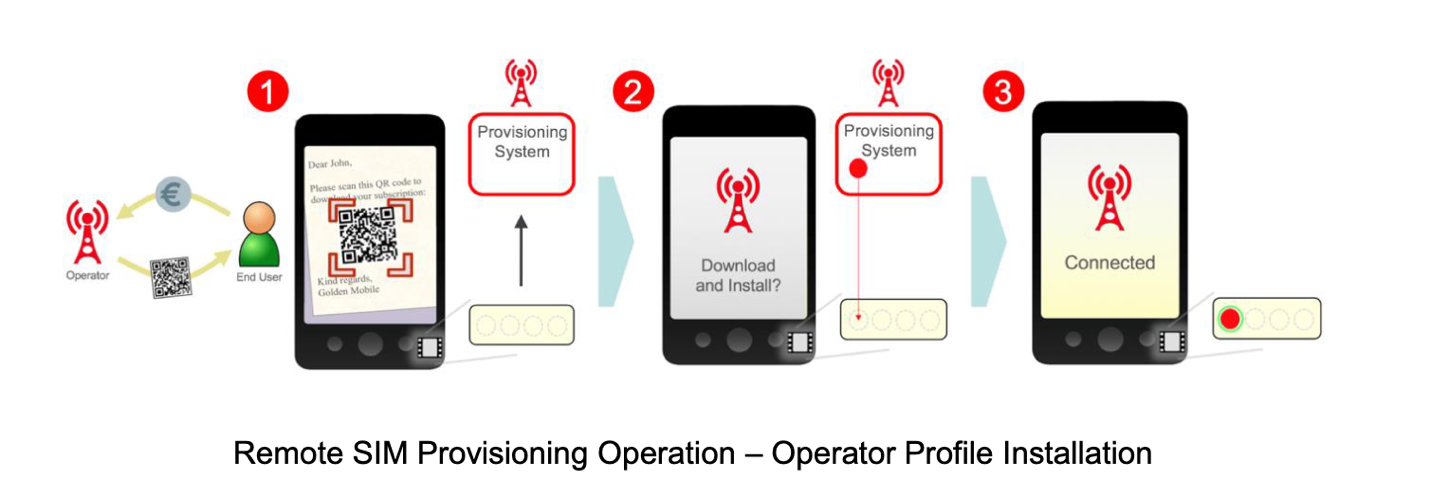
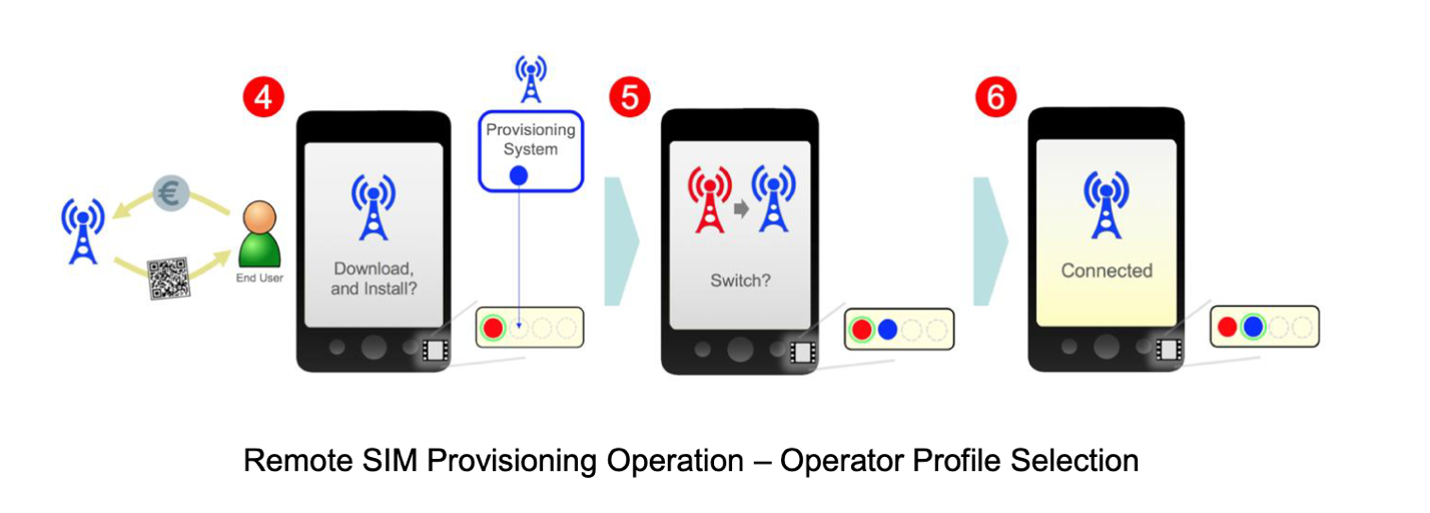
Source: GSMA
In-app eSIM activation
In the case of in-app activation, it’s a quick and straightforward process for the user. The process of activating an eSIM involves the user downloading the mobile app of the operator and activating their eSIM profile with a single tap. The app utilises the operating system APIs of the device to transmit the SM-DP+ information to the eUICC chip embedded. Which allows the app to seamlessly activate, delete and manage eSIM profiles on the device. The activation of the eSIM profile takes up to 60 seconds.
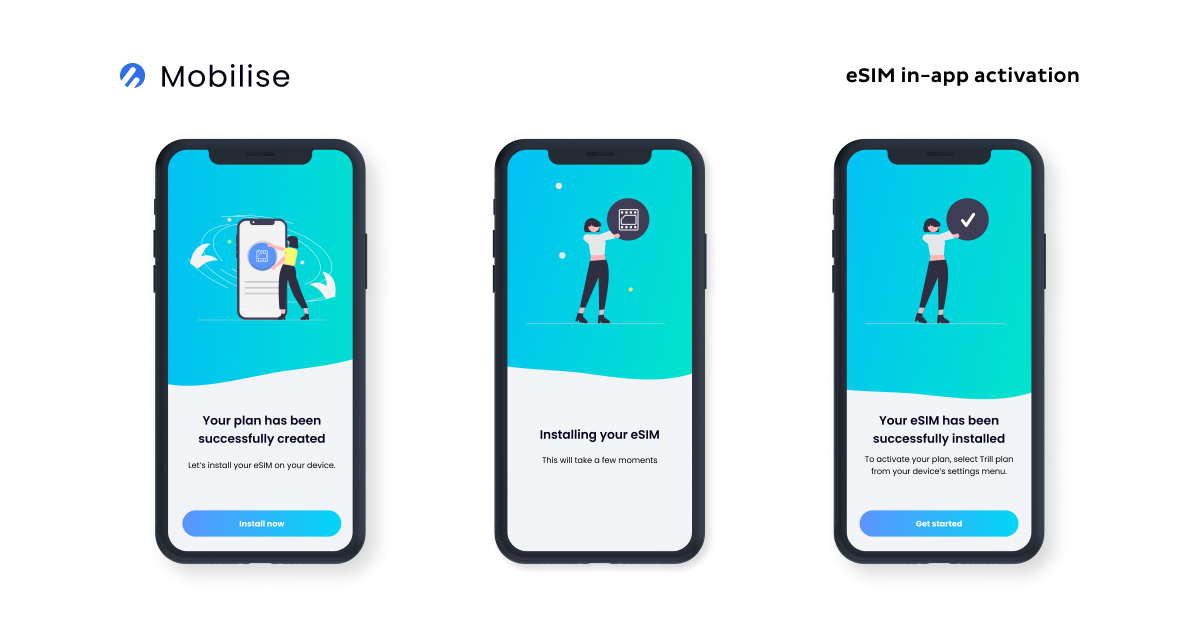
RECOMMENDED READING
Conclusion
In summary, eSIM profiles are paramount to ensuring the operability of eSIMs, playing a crucial role in activating and setting up the eSIM for its intended and optimal use.
Essentially, an eSIM profile refers to the data associated with an operator’s subscription, including their credentials, configurations, and any SIM-based applications. This can be activated through multiple different methods such as manual, QR codes, and our favourite – in-app activation.
The move from physical SIM cards to eSIMs not only simplifies the activation process but also promises a more seamless and user-friendly experience. One that’s often prioritised and preferred by users. Service providers that are looking to upgrade their eSIM services, or even start providing eSIM to their existing customer base, should understand the vast benefits that eSIMs bring to their business and their customers.
Contact us today to find out what Mobilise’s eSIM solutions can do for your business, or click here to find out more!



